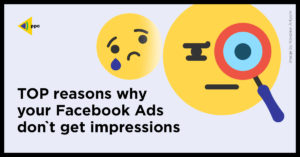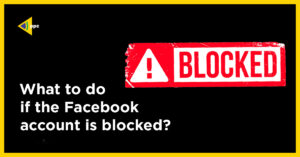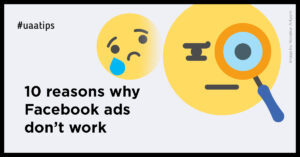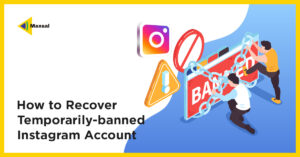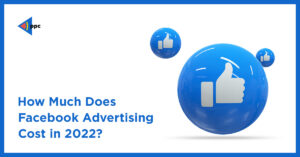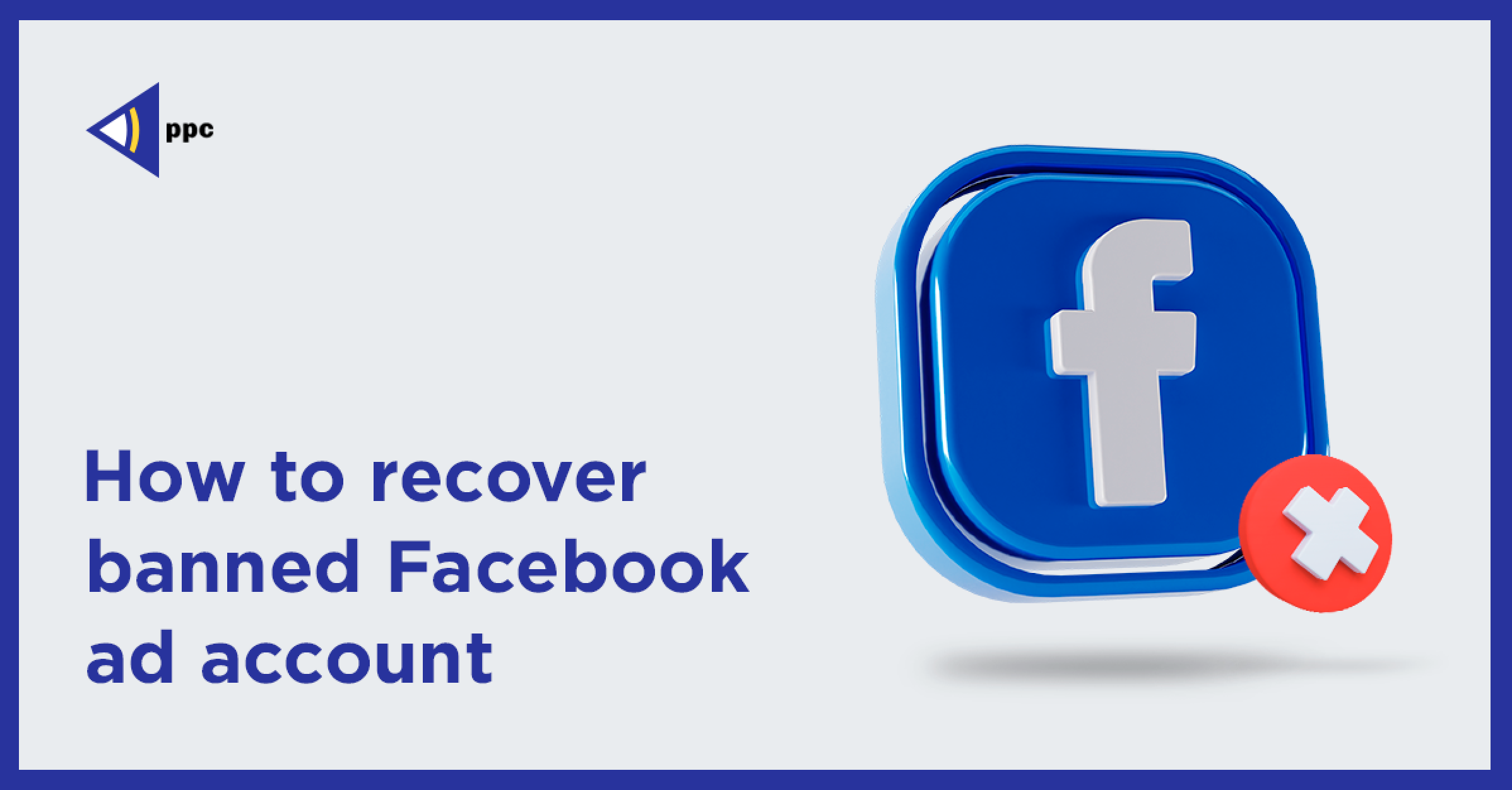
How to recover banned Facebook ads account
Facebook suspended your Facebook ads account. Are you wondering how to appeal this decision and get your ads running again?
This article will show you how to submit an appeal to have your Facebook advertising account reactivated.
You go along your way crushing Facebook ads and starting to scale up your advertising spend. Then one day you log in to your Facebook Ad account and see the red message warning of doom.

Your first reaction: sheer panic.
You can rest assured that everything will be fine. You’ll be “all set” with the simple steps in this article.
It’s easy to believe that Facebook is trying to take you down in this situation. Keep in mind that Facebook is not a vindictive, maniacal human watching your misery. Your account was closed because of a red signal sent to the algorithm. Facebook is responsible for ensuring that threats are mitigated at all times.
These red flag-inducing behaviors fall into one of two categories.
- Negative feedback is high
- Facebook Advertising Policies not followed
Red Flag: High Negative Feedback from Your Ads
You can get feedback from Facebook users that you have targeted with ads. They have the option to:
- Hide the single advertisement
- Hide all posts on your Facebook page.
- Like your Facebook page.
- Report the ad content to Spam.
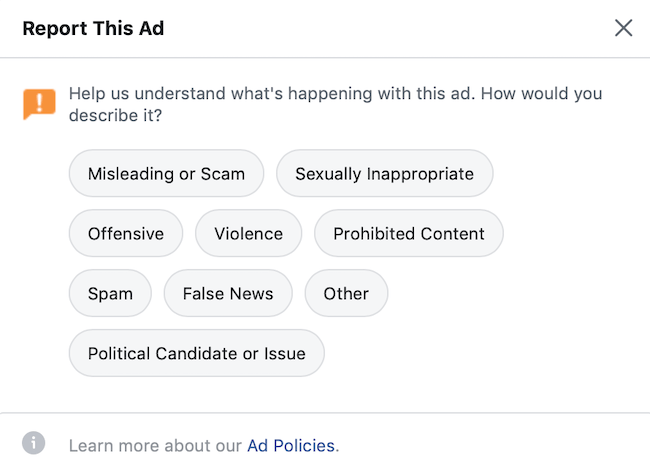
If a Facebook user reports an ad for one of the above issues, it is marked as negative feedback.
It doesn’t matter if one or two people report an advertisement, like your page or hide your content. Problem is when negative feedback starts to increase relative to overall ad impressions.
Navigate to the ad level within Facebook ads Manager to see the negative feedback score. Click Preview to select the ad. Select Facebook Post with Comments from the pop-up.
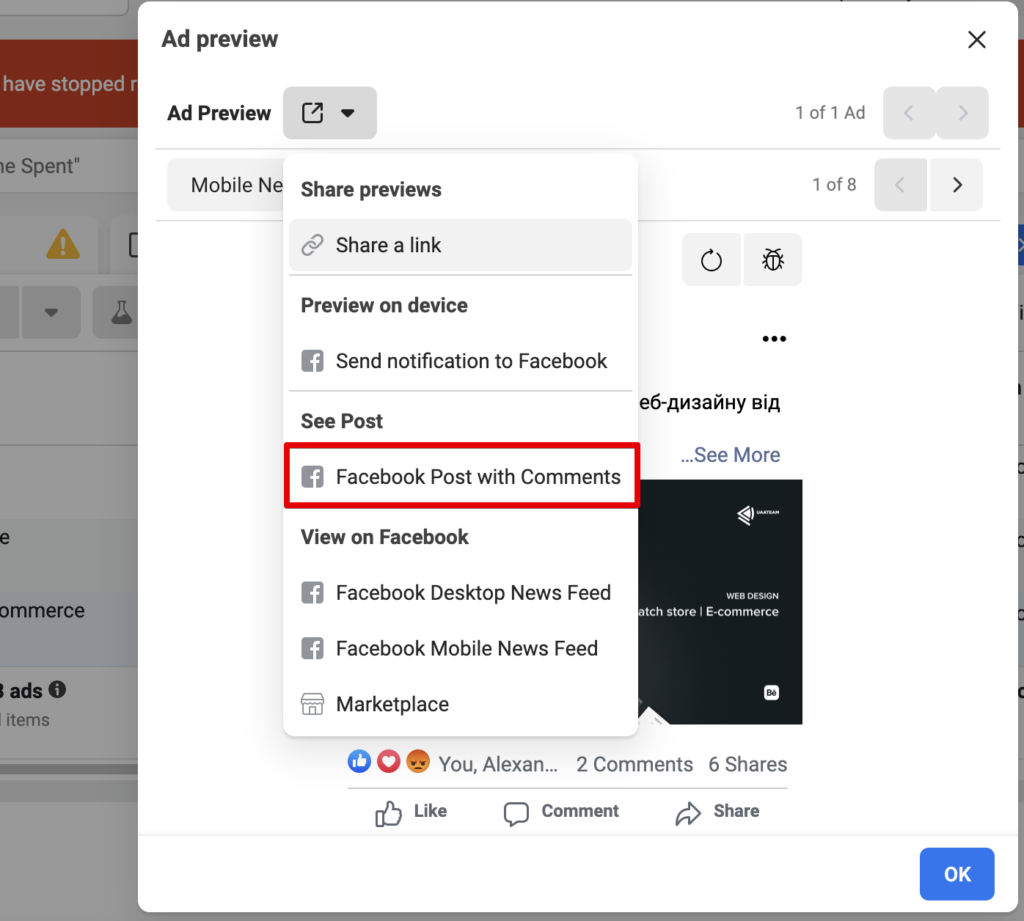
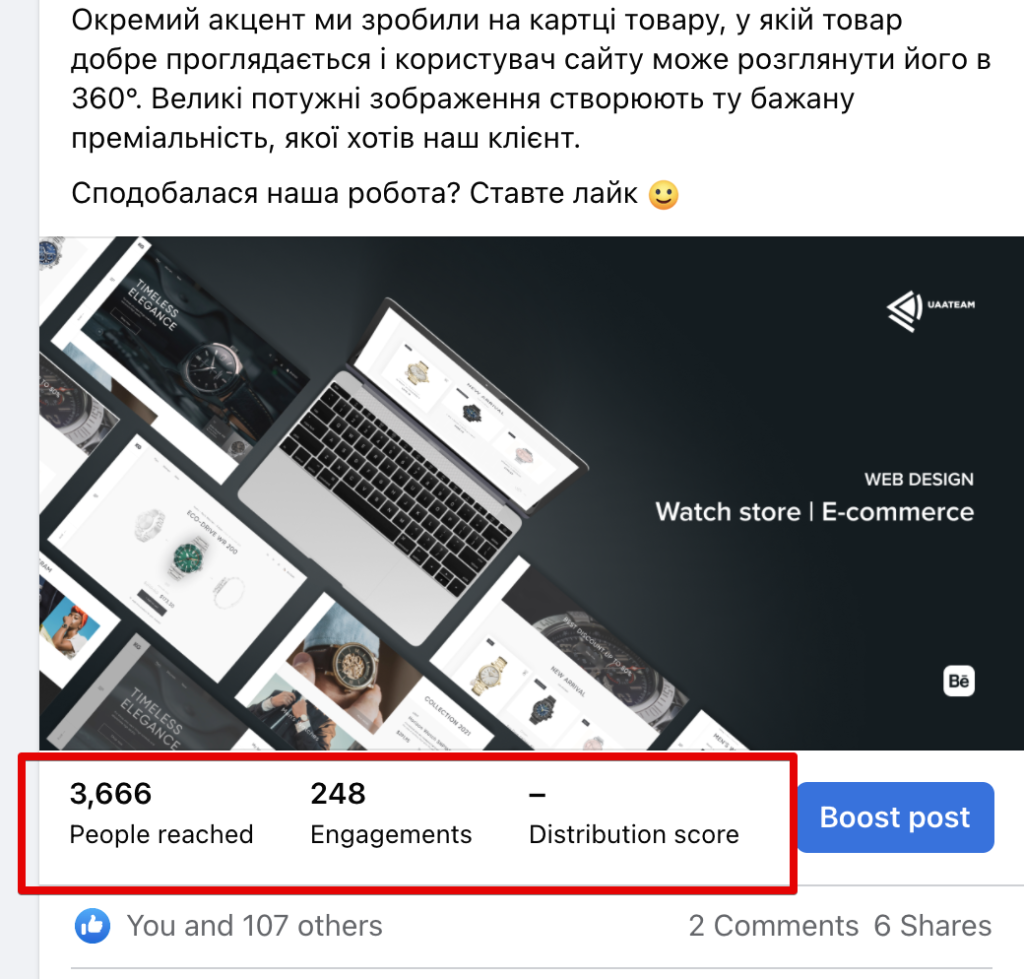
Then click on “View more details”
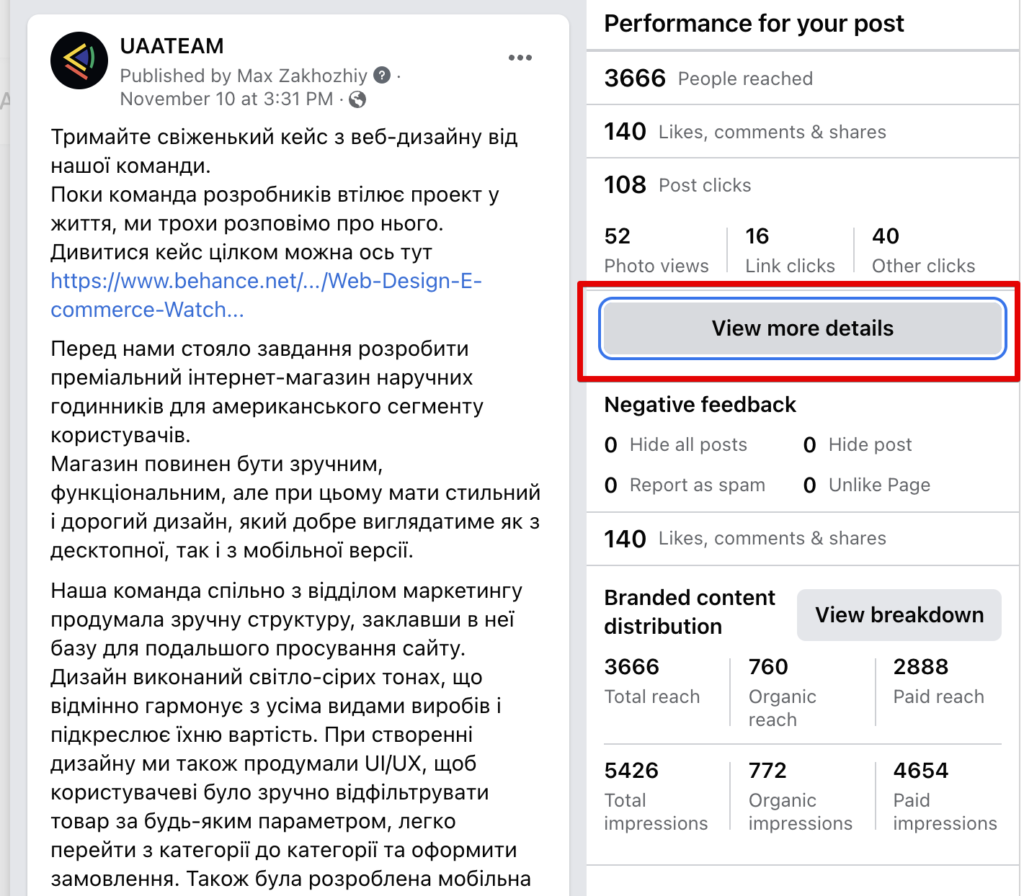
Look at the Negative Feedback section in the Post Details window.
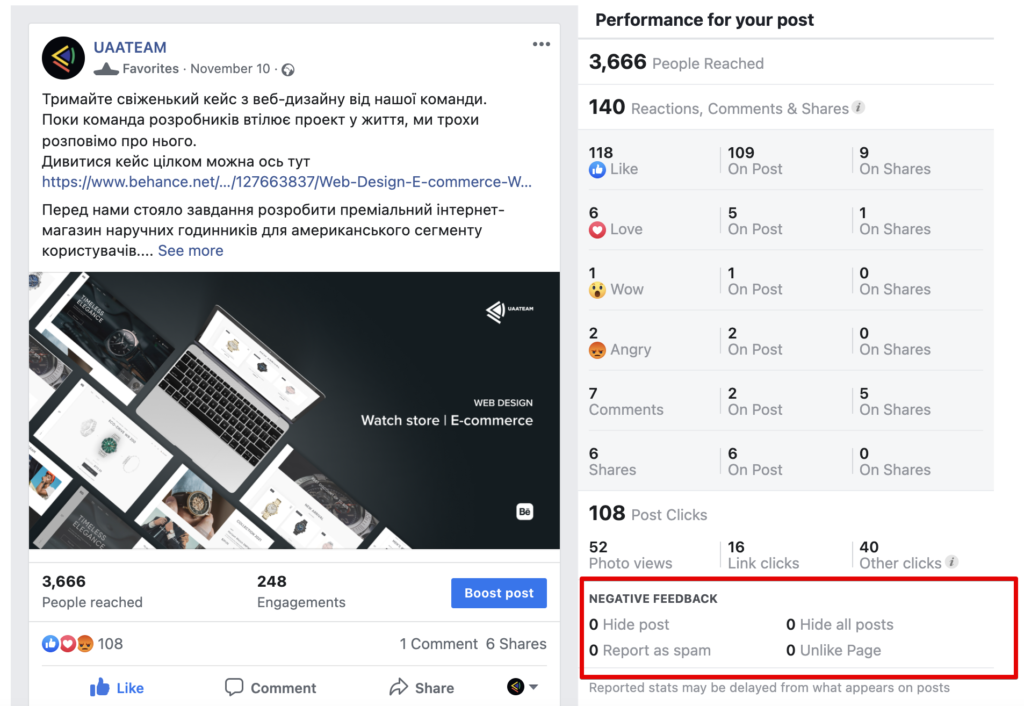
We don’t know what percentage triggers a red alert, but I have found that if you get more than one spam report per 5,000 impressions (or 0.02%), you should close that particular ad to preventive measures.
You can use the same formula to calculate your negative feedback rates for Facebook posts (i.e. the amount of activity divided with impressions)
Add all the numbers in each of the four categories that fall under Negative Feedback.
- Hide Post
- Hide all posts
- Spam Report
- Do not use this page
Divide that number by the total number of people reached.
You can determine if any ads caused your account to be closed by calculating your negative feedback percentage. Your failure to adhere to Facebook’s Advertising Policies is most likely the reason your account was closed.
Red Flag: Facebook Advertising Policies You Violate
Facebook states that “our Advertising Policies guide advertisers on the types of advertising content allowed.” Each ad placed by advertisers is reviewed against these policies before it is approved.
If you don’t know Facebook Advertising Guidelines then get up to speed. This is the complete rulebook for Facebook advertising. All that is allowed or not. Anything that isn’t allowed or is a gray area.
People think they can just dance around the policies, but then they get upset when they are in violation of them and lose their account. It’s not Facebook. It’s you. Very rarely do ad accounts be disabled for any reason.
To begin, log into Ads Manager. You’ll typically see a red bar indicating that your account has been disabled. To appeal your account’s demise, click Contact Us.

If the red bar doesn’t appear, it’s possible that you have received an email stating that your account was disabled. To appeal, follow the instructions in that email.
Additional Support Options
After you have submitted your appeal through Ads Manager, you have additional options to reach out to Facebook support in order to increase your chances to get your ad account restored.
Click the question mark icon in the upper-right corner of the ad account. Scroll down to the bottom until you see the blue link “Still Need Help?” or “Help Centre”.
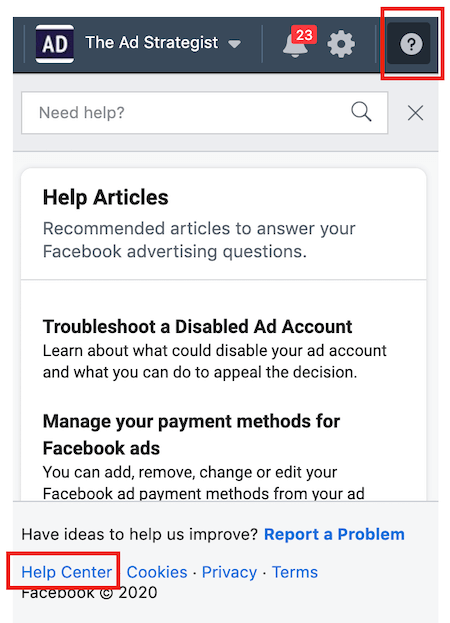
Clicking this link has the advantage of launching a page that offers instant chat with the Facebook support team. Instant chat allows you to speak directly with a Facebook representative. This can speed up the appeal process.
If you work with a professional advertising agency they will do it much faster for you. For example, we are an Official Facebook Marketing Partner and we have direct chat with support, like this:
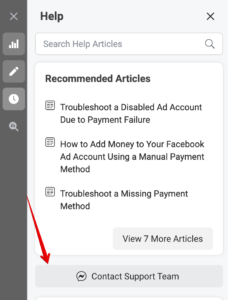
You can file a complaint regarding account closure if instant chat is not available. This form allows you to tell Facebook about your situation and makes it official.
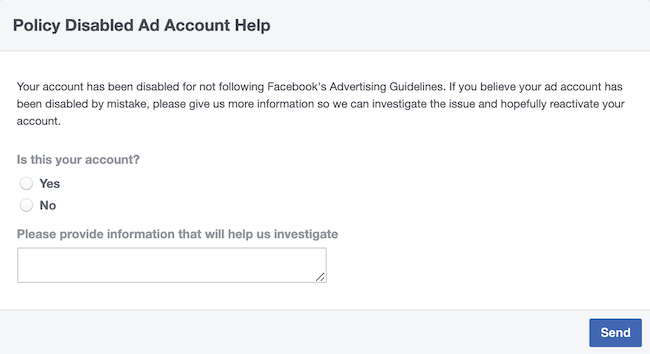
This account number will be used by Facebook, not your Business Manager ID.
You can now provide Facebook with all the information they need to confirm that your ad account compliance.
It may seem like Facebook takes forever to respond to your appeal once you have submitted it. You can track the status of your appeal at facebook.com/support.
You can view your case status, such as whether it is open or closed, and the details of each case in the support mailbox. If you are not happy with Facebook’s decision, you can reply to the appeal.
Best-case scenario: Facebook reinstates your ad account. This would be a major win as it saves all your hard work, such as the custom audiences that you created using your Facebook pixel and all your advertising campaigns results.
6 steps to prevent your account from being shut down again
These steps will help you prevent your Facebook advertising account from being suspended again after it has been reinstated.
Follow these Facebook Advertising Policies
This is the most important thing: Follow Facebook’s advertising policies. End of story.
Yes, I’m a rule-follower. Your Facebook advertising account should follow the same rules. Accounts are often shut down if they don’t follow the advertising guidelines set forth by Facebook. I want to highlight the sections on Prohibited Content, Restricted Content.
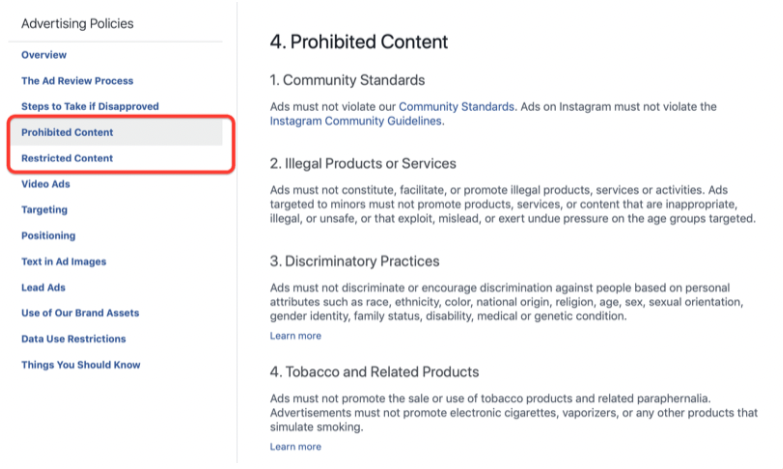
These rules are yours to follow.
Make Your Own Facebook Advertising Strategy
Three-pronged approach for your Facebook advertising strategy:
- Connect: Reach out to new people in order to expand your audience.
- Commit: Generate qualified sales leads.
- Close: Find new customers
It helps to reduce negative feedback rates when clients and members run multiple ad types that have different results. Advertisers with a strategy for their results will be more ready for whatever Facebook throws at them.
If your account isn’t reinstated, and you create a new Ad Account, use a new credit card number
Your previous Facebook advertising account may have a credit card attached. This will be flagged as a red flag. This will prevent another account from being shut down.
Get a lawyer to draft your privacy policy and website terms
This step shows Facebook that your business is trustworthy. This is great for the user experience.
Not a lawyer. This is not legal advice.
Enhance your user experience
Did you ever click a link on a website and be bombarded with quadrillions of pop-up messages? If you do this, your users will abandon your website immediately.
Facebook refers to this as “a non-functional landing page”, and you can find all examples in Facebook’s Advertising Policies, under Prohibited Content.
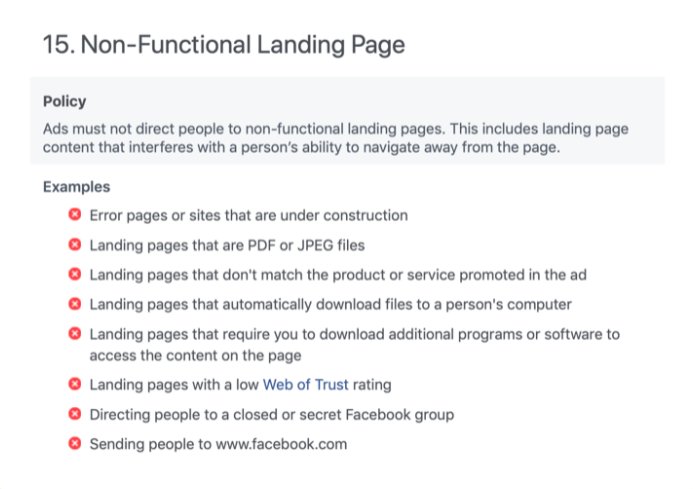
Your website should be optimized for user experience. Bright, bold, and legible fonts are important. Layout all the information users will need when they click on your ads to get to your site.
Take responsibility
Our actions result in Facebook advertising accounts being disabled nine times out of ten. It’s much easier to ensure that your account doesn’t become a red flag if you are able to admit it.
Conclusion
It can be demoralizing to lose your Facebook advertising account. However, you can get back on the advertising track by following these simple steps.
Remember that Facebook’s algorithm, the same one that temporarily closes down your ad account, also protects you against consumer fraud. You wouldn’t like to be served an advertisement from a company that has a history of fraudulently charging your credit card, enrolling you in a subscription program without consent, or even not delivering the product you bought. These situations are all too common.
This is not a reason to blame Facebook. Instead, take this opportunity to evaluate your company’s business practices and identify areas where you can be more efficient.
- Are you looking to update your terms and conditions or create a new privacy statement?
- Could you change the customer onboarding process to reduce chargebacks and refunds?
- Is it possible to improve the customer experience by providing more context or information in your sales process?
While these questions will not get your ad account running again, they will help reduce your risk exposure in the future.
What do you think? These steps may have helped you to get your Facebook advertising account back up and running. Comment below.



